An ambitious plan to fully restore the aging St. Louis Cathedral in New Orleans is taking a first step forward with an excavation under the building’s foundation. The small excavations are unearthing several hundred year’s of history beneath the French Quarter landmark.
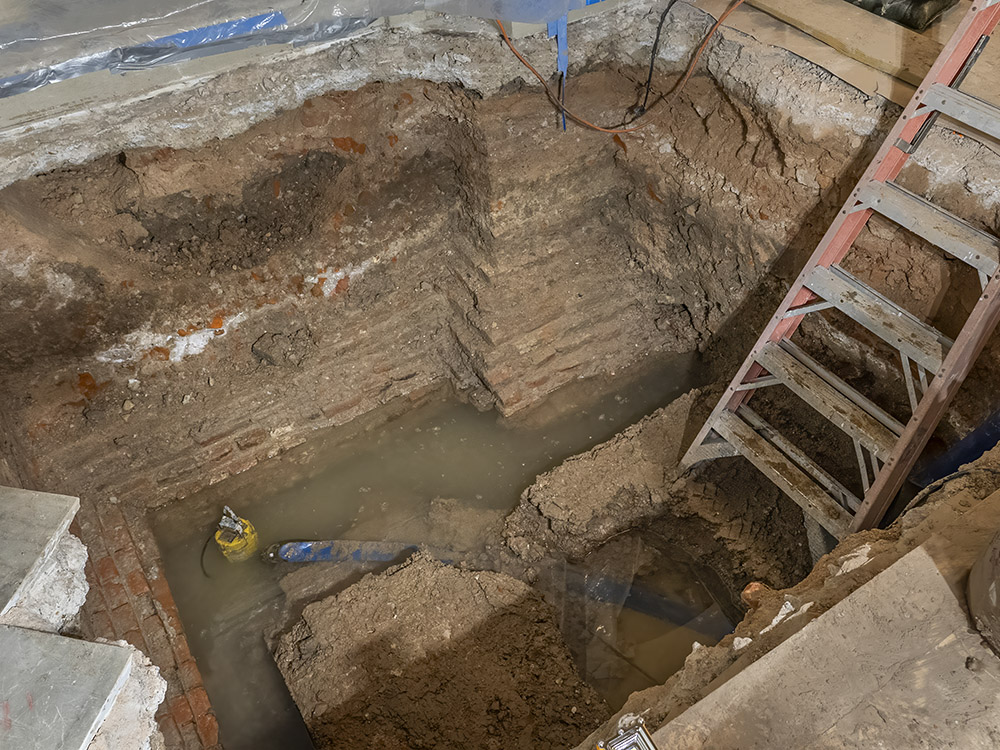
a sinking foundation uncovered
Architects and engineers needed to see the ground beneath the front towers of the building to determine why the Cathedral is sinking. The elevation of the interior floor is nearly 20 inches higher than the front entrance. Workers dug three holes, each five to six feet deep, inside the Cathedral.
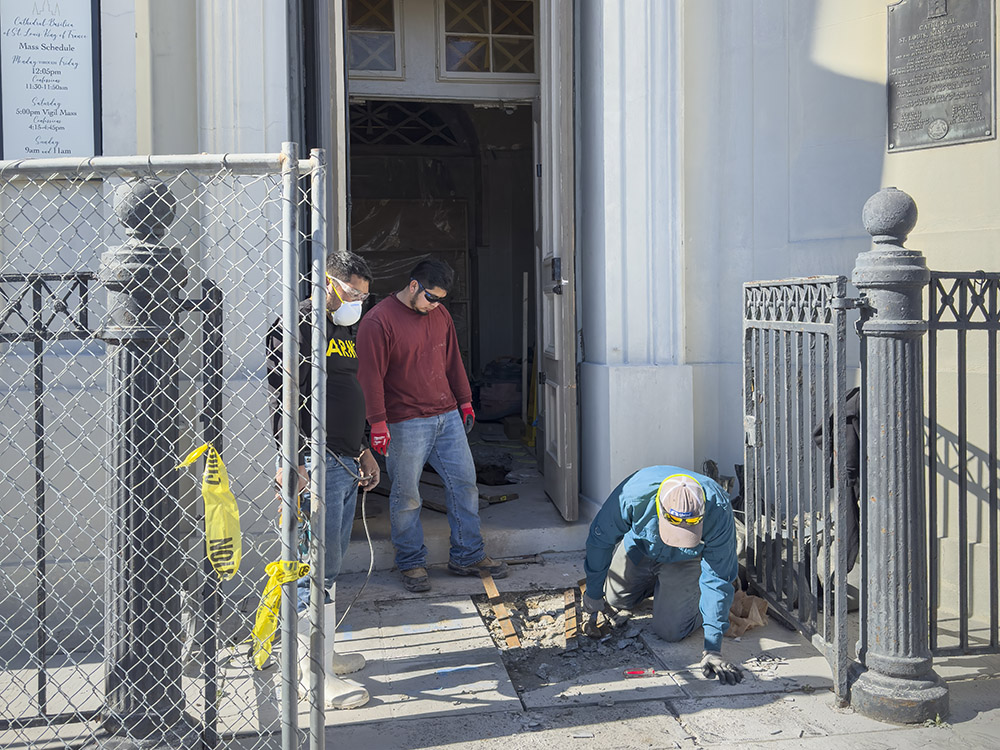
And crews dug another hole outside the front entrance. The holes exposed a foundation constructed on tiered bricks columns that stand on top of wood blocks. The bottom of the hole filled with water when the excavation reached the area’s shallow water table. Cathedral architect Andre Villere explained, “We have seen a good example of what the foundation looks like and it does not appear to be failing in any way.”

cathedral excavation excites archaeologists
The excavation reveals a timeline of the Cathedral’s history that dates back 300 years. French settlers built the first church on the site near the Mississippi River in 1727. Archaeologists found numerous brass pins that they believe were used to hold stretched cloth over the church’s windows before glass was available in the new French colony. And as they sifted through the mud and clay beneath the ground, archaeologists and students from the University of New Orleans found pottery, some of it early colonial pieces from France, and other pieces of Native American pottery.
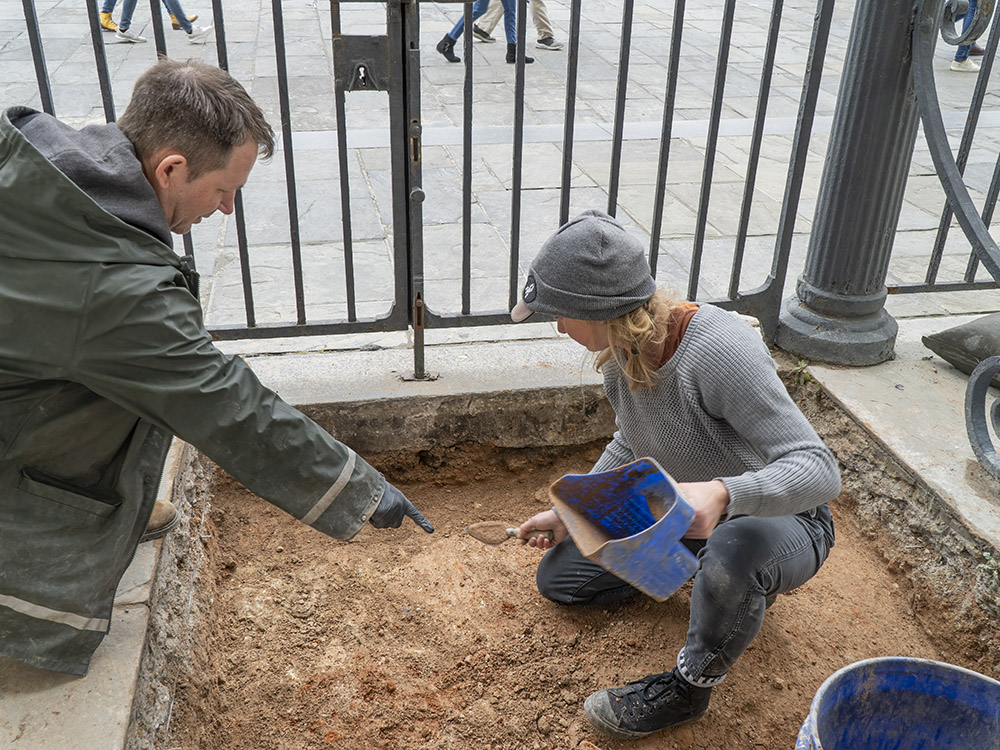
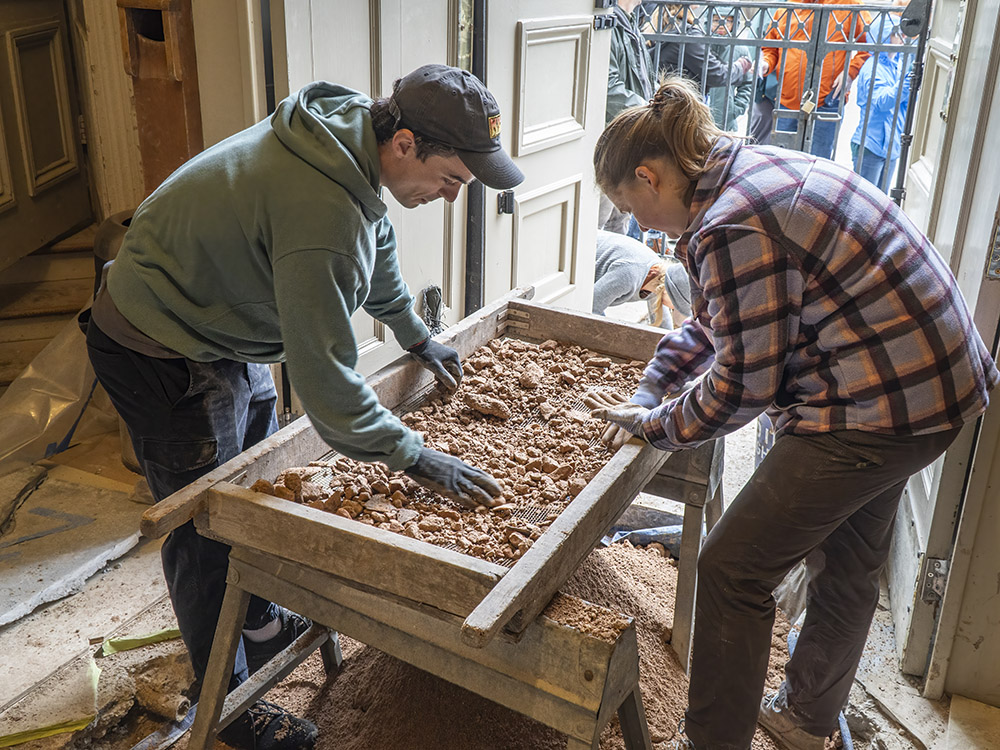
UNO Archaeologist shows artifacts
Today’s catheral is third building on site.
A fire that swept through New Orleans on Good Friday, 1788, destroyed the original church on the Cathedral site. A second, larger church was completed in 1794. The excavation revealed the brick floor from the 1794 church about two feet below ground. “It’s always fun thinking that you’re stepping down onto a floor that someone hasn’t stepped on in 200 years,” commented UNO Archaeologist Dr. Ryan Gray.
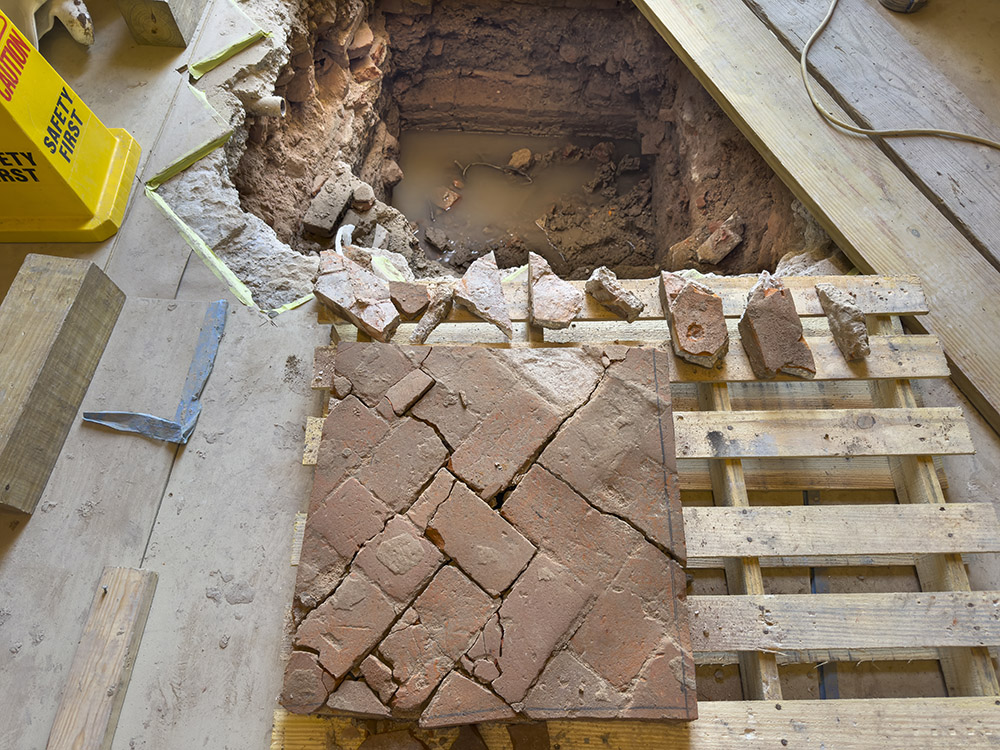
Workers also discovered a horizontal black line two feet down that appears to be the burned ash and debris from the 1788 fire. Gray said, “There is a sense that you can smell the smokiness of it”.
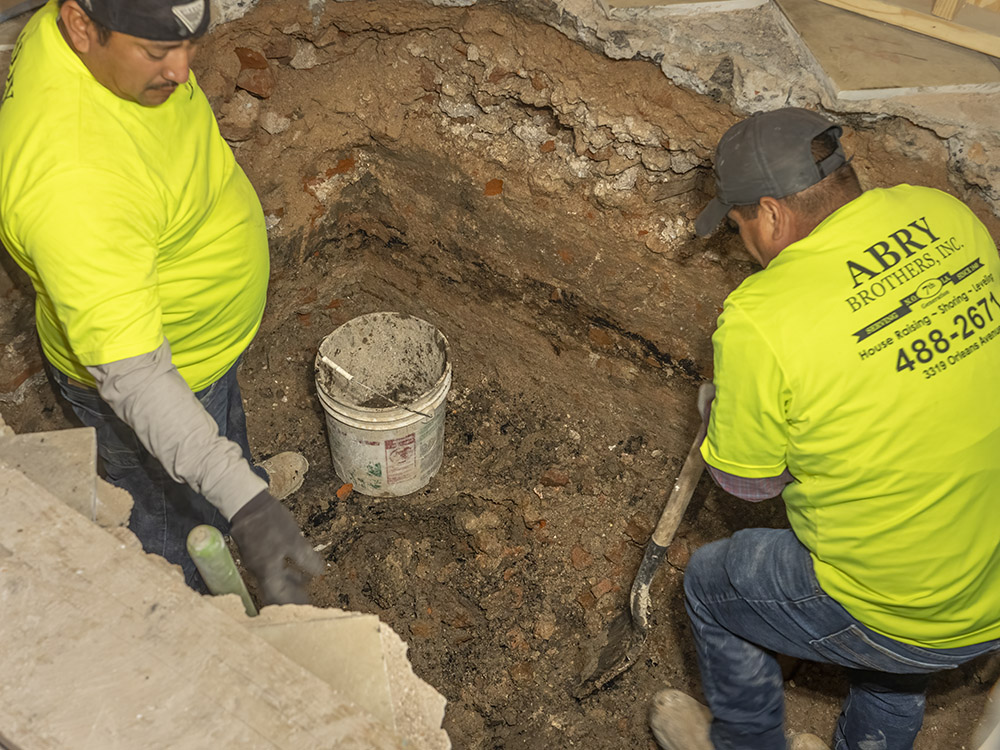
19th century expansion and collapse
Throughout the early 1800’s, the Cathedral was remodeled and bell towers added to the front facade. While the building was undergoing a major expansion in the 1850’s, the walls failed and caused a massive collapse. The present-day Cathedral is the result of the 1850’s reconstruction.
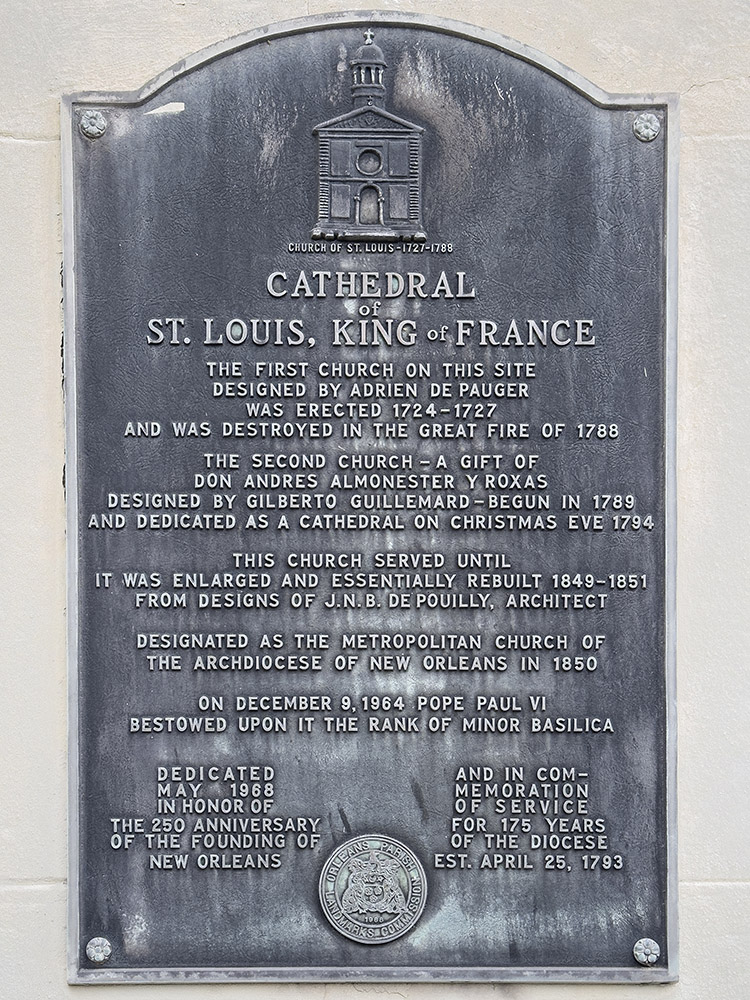
cathedral excavation featured on tv
fundraising to restore st. louis cathedral
The Catholic Community Foundation of New Orleans is attempting to raise the estimated $75 million needed to fully restore the French Quarter landmark. Gayle Benson, owner of the New Orleans Saints and Pelicans, is leading the effort, “I think people are starting to pay attention,” Benson said. She adds, “I feel very confident in the place where we are now”. Those interested in making donations to support the Cathedral restoration can do so through this website: Our City – Our Cathedral
gallery of artifacts from cathedral excavation
Notre dame and its lessons for st. louis cathedral
In March, 2023, architects from St. Louis Cathedral in New Orleans visited the reconstruction site of Notre Dame in Paris which was damaged in a massive fire four years earlier. See what lessons were learned from Notre Dame and why St. Louis Cathedral is in need of major restoration. A look deep inside the New Orleans landmark shows signs of significant deterioration. Click here to learn more and view the documentary Saving St. Louis – A New Orleans Icon.
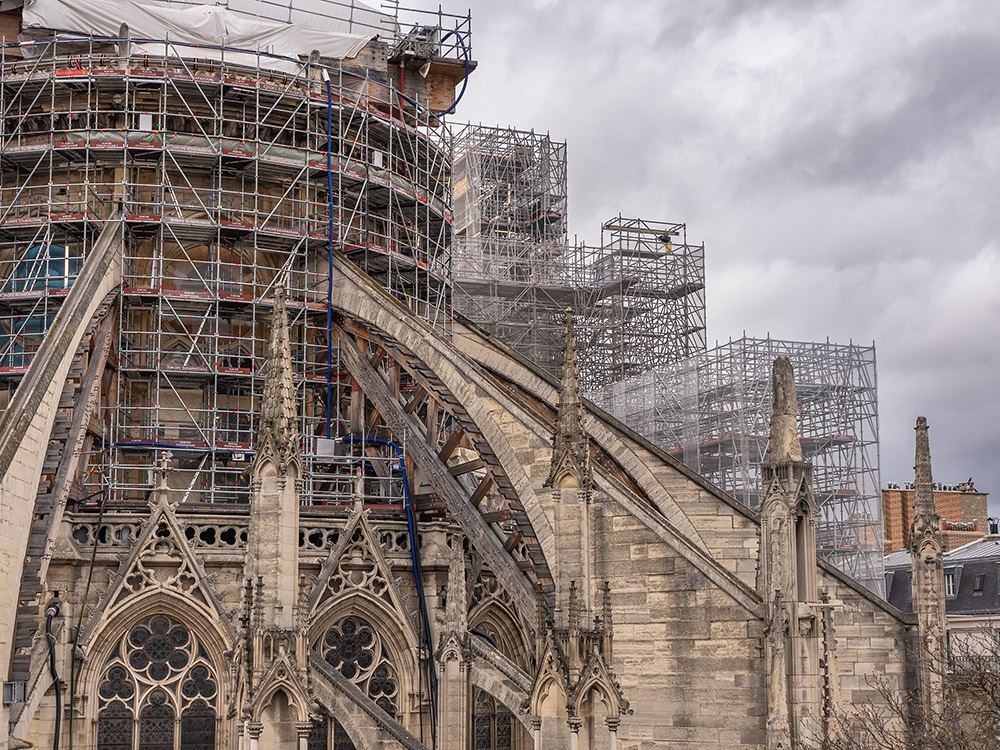
a world-class lesson in restoring a cathedral
Click here for a fascinating look inside Notre Dame and St. Louis Cathedrals.


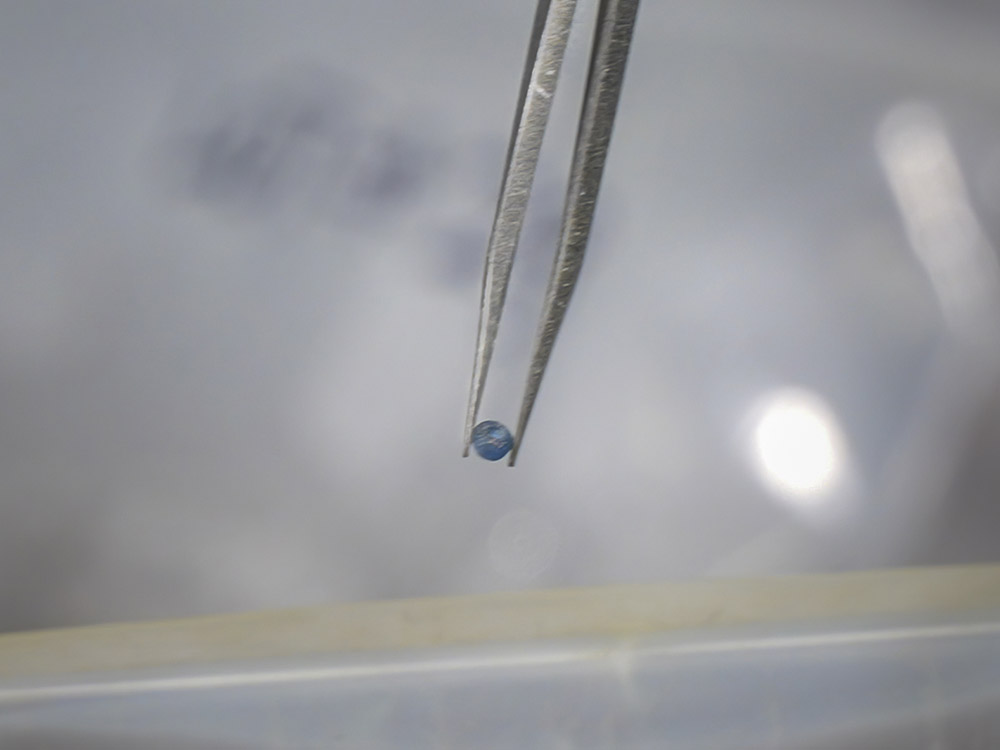


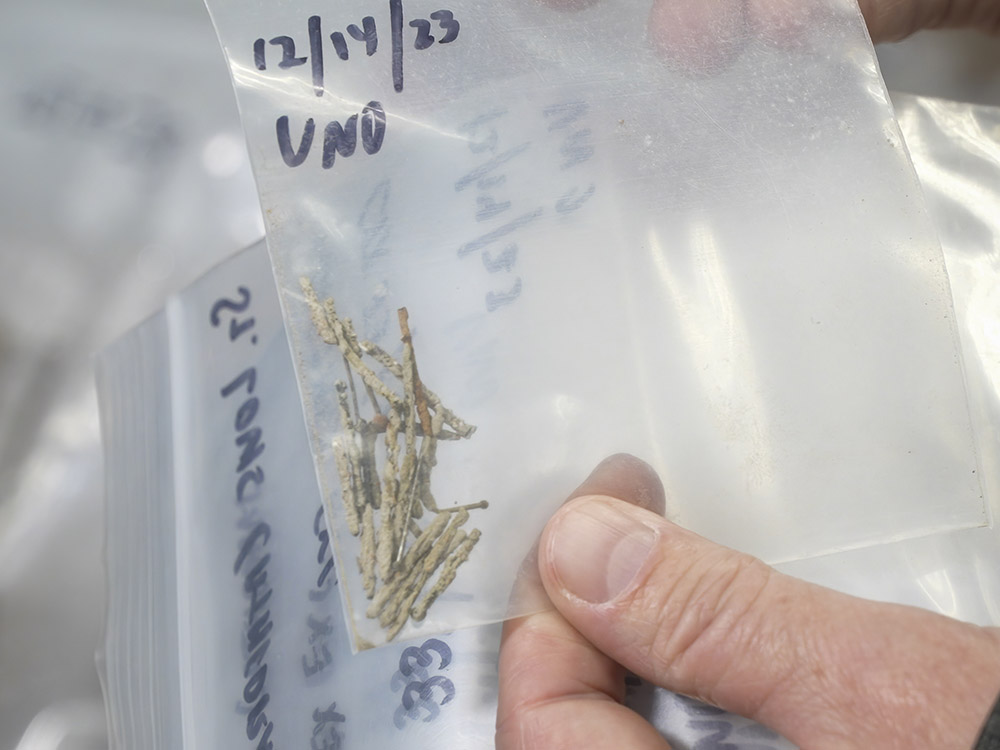


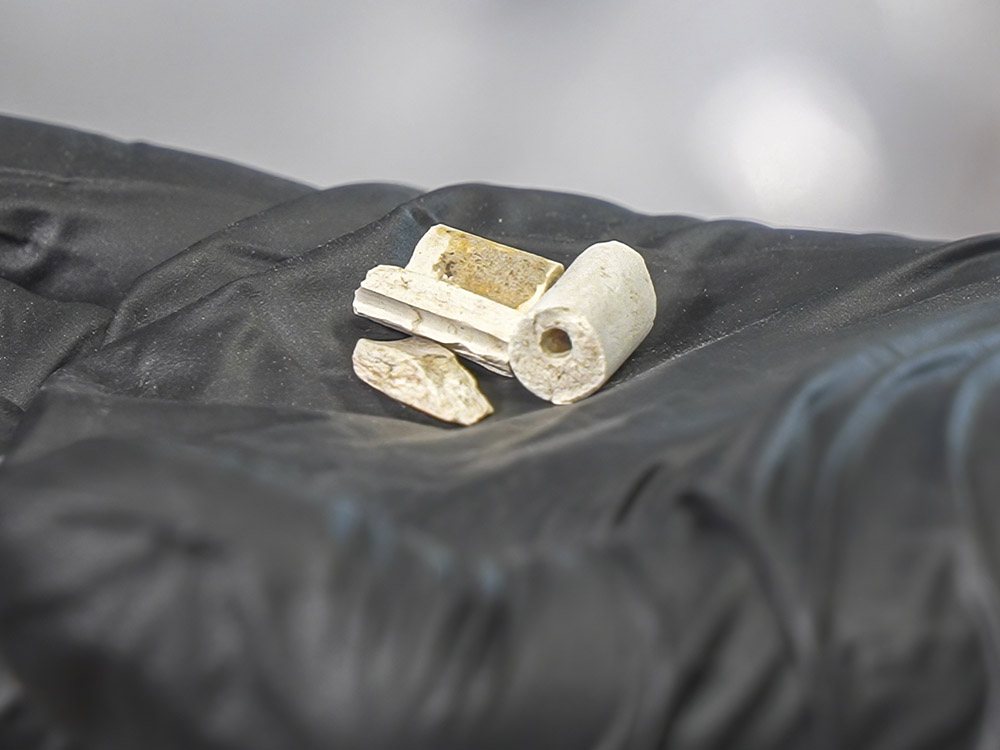
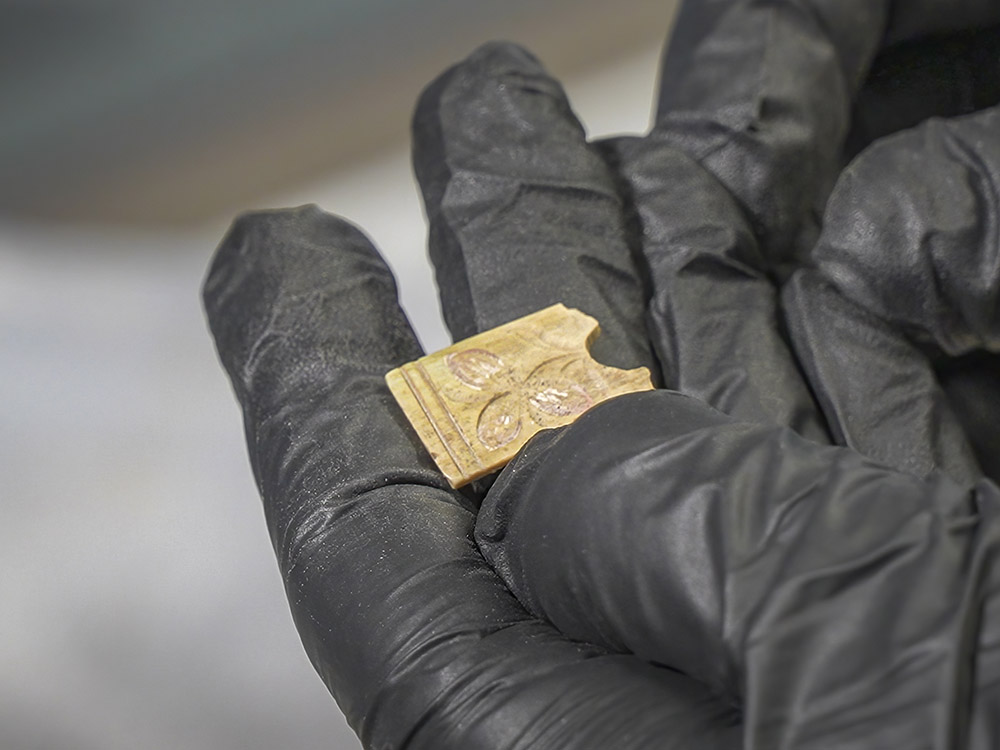
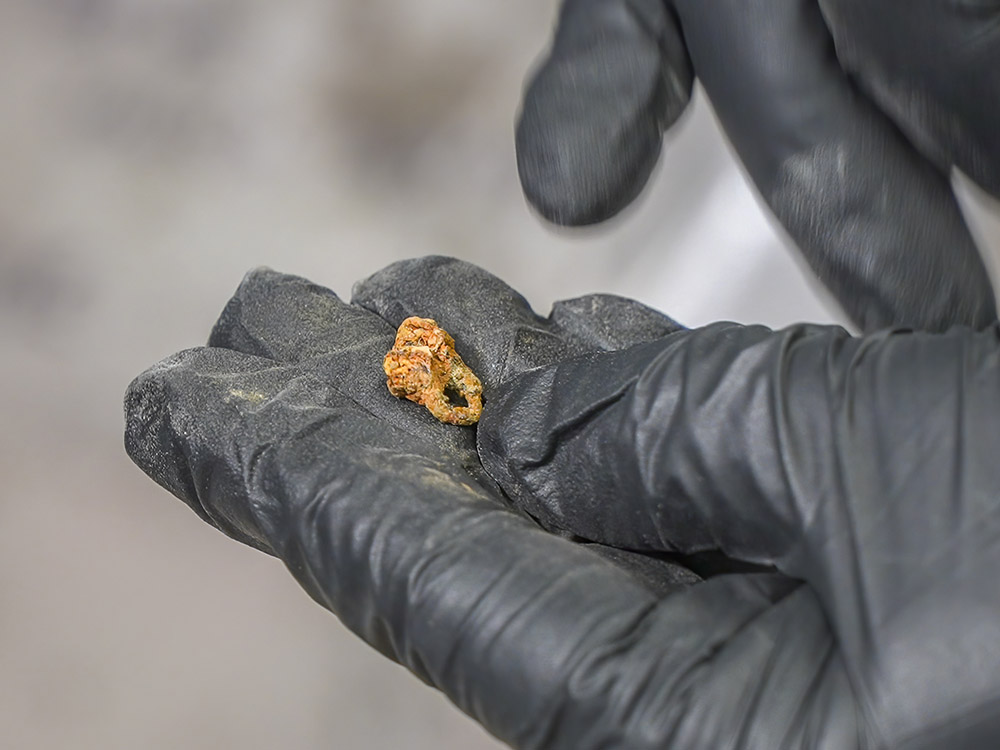
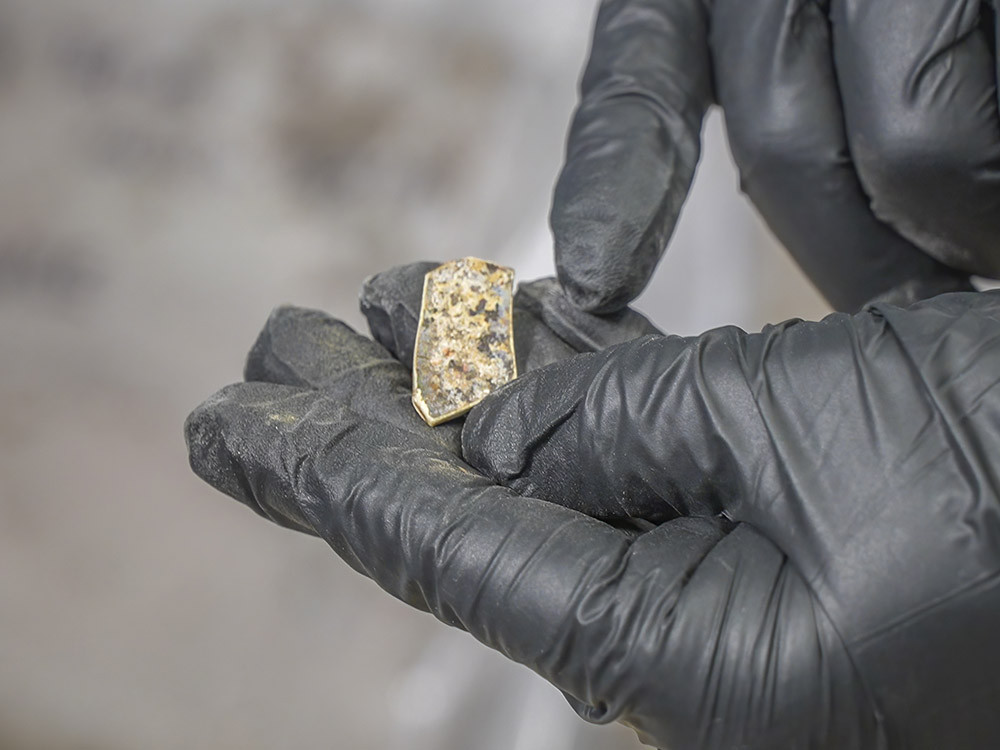

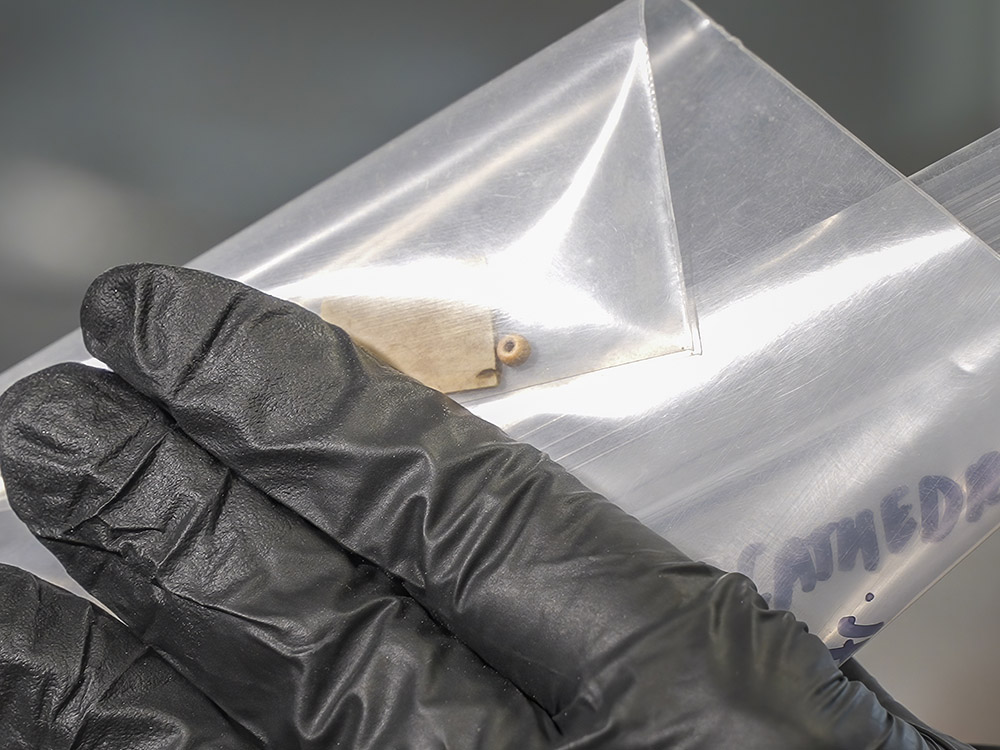
Matthew H Constant
Amazing at the many-faceted layers of historical significance in St. Louis Cathedral.
It’s well worth preserving this jewel in the city’s history.